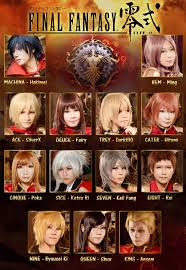Rob Dolen
Columnist
Out of the vast array of games that people expected to be re-mastered for the PS4 and Xbox One, not many expected the Japan-exclusive PlayStation Portable game “Final Fantasy Type-0” to be released worldwide. It is a welcome addition to the console lineup.
“Final Fantasy Type-0,” developed and published by Square Enix – known for developing entire “Final Fantasy” series as well as the “Kingdom Heart”s series – is an open world fantasy action-RPG that takes place in the “Fabula Nova Crystallis” subseries, which is the same mythos that “Final Fantasy XII” and “Final Fantasy XV” follow.
The “Final Fantasy” series has always been story-driven, so players can expect a lengthy and engrossing storyline. At first, the plot is a little daunting, as you’re quickly taken into a cinematic opening that sets the stage for the rest of the story to unfold.
“Type-0” takes place within the land of Orience, which is separated into the four nations known as the Crystal States due to the four magical crystals that provide certain aspects of knowledge (Magic, Science & Weapons, Dragons, and Defense).
You control the titular Class Zero, a group of 14 students from the Vermilion Peristylium (the academy of magic) and you are tasked with defeating the Militesi Empire.
The Militesi Empire, formed from the Crystal State that contains the knowledge of science and weapons, has launched an offensive to capture the other Crystal States and gain power over the other nations.
At the time, it was a pretty complex game for PSP, but one of the gripes about “Type-0 HD” is that it still appears to be a PSP game.
While most character models and environmental textures were re-mastered, some were not touched at all. Also the cut scenes between gameplay are lacking in quality because they appear to not have been rendered from the PSP despite the character model touch ups. This is a big letdown for those who wanted the full graphical potential of the PS4 to show in their games.
The gameplay in “Type-0” takes on a much more dynamic, action-oriented battle style compared to main “Final Fantasy” entries in the series. Rather than turn-based fighting, players are thrust into real-time battle and are free to choose their actions, similar to “Crisis Core: Final Fantasy VII,” between three party members. Players are encouraged to swap between fighters in battle according to their battle approach: start with Ace to begin with long-rage initial attacks, continue with Nine and his devastating close-quarters combat, and rely on Queen’s support magic to keep the party intact.
Like most other role-playing games, you can equip magic for battle equipment with stats buffs for background advantages, as well as other special abilities. Gaining experience and leveling up provides improvements to current abilities as well as gaining new ones.
Despite some of the lackluster cut scenes and graphical ignorance, players become engrossed in the complex, engaging story and exciting gameplay letting the graphical letdowns fade into the back of their mind.


